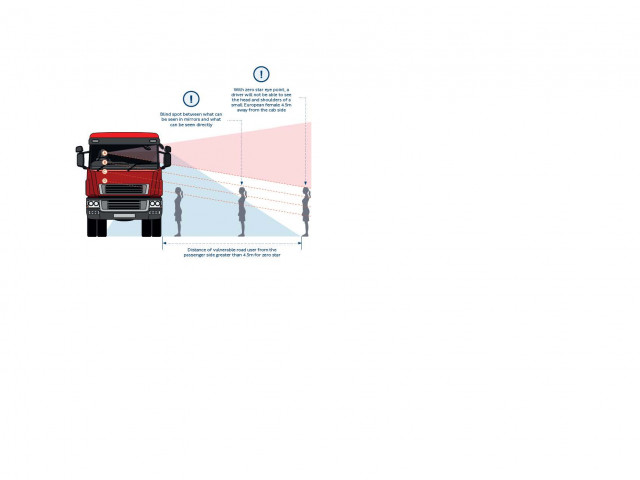What is government doing?

Vision Zero action plan
The Vision Zero action plan is one of several action plans supporting the implementation of the Mayor's Transport Strategy 2018 Find out how the Mayor and TfL will achieve their Vision Zero ambition – the elimination of all deaths and serious injuries from London’s streets by 2041 with safer speeds, streets, vehicles and behaviours.

TfL's direct vision standard
Standard cabs make it difficult for drivers to see cyclists to their left or immediately in front of them. Direct vision cabs allow drivers to see much more around them. Lorries with low levels of direct vision have been disproportionately involved in cyclist fatalities.
TfL have therefore created a Direct Vision Standard (DVS) to rate how much a driver can see directly through their cab windows.

HGV Safety Permit
After consultation on the Direct Vision Standard TfL have created the HGV Safety Permit. From October 2020 vehicles with the lowest level of direct vision will be banned unless they meet requirements for other safety measures including cameras, sensors, audible warning of intended manoeuvre. From October 2024 higher levels of direct vision or further safety measure will be required.

Safe urban driving
Safe Urban Driving (SUD) is a Government (JAUPT) approved training module that meets driver CPC requirements. It was originally developed by TfL for lorry drivers who drive regularly in an urban environment with high volumes of vulnerable road users, such as cyclists and pedestrians. SUD is delivered in two sections, a classroom theory module and a practical cycling module, where drivers experience a cyclist's view of the road. SUD attendance by drivers is a mandatory part of the FORS and CLOCS standards.

Freight and Servicing Action Plan
The aim of the Freight and Servicing Action Plan is to support safe, clean and efficient movement of freight in our city. The plan includes reducing lorries entering central London in peak hours by 10% by 2026, consolidation of freight movements, use of electric cargo bikes for last mile deliveries, encouraging Londoners to select better options for personal deliveries, and increased use of rail and water for freight movement.

Keeping cyclists safe around roadworks
Roadworks and other construction-related activities on TfL's road network can add to risk on the roads, especially when lorries are involved in the work. TfL's Temporary traffic management handbook sets out good practice for keeping people safe.

Camden CLOCS up another first
Camden’s contractors are now required to meet work related road risk terms linked to CLOCS and which include Fleet Operator Recognition Scheme (FORS) (link) silver level accreditation (grade) as a component. As a CLOCS champion, Camden has stipulated that construction developments in the borough also have to adhere to the CLOCS standard.

EU Direct Vision
EU Governments have agreed a law requiring improved levels of direct vision from lorries. The direct vision standard governs the amount of the road drivers must be able to see directly (not through mirrors or cameras), and from September 2025 all new types of truck and bus models sold in Europe will have to meet it. From September 2028 all new trucks and buses sold must comply.





